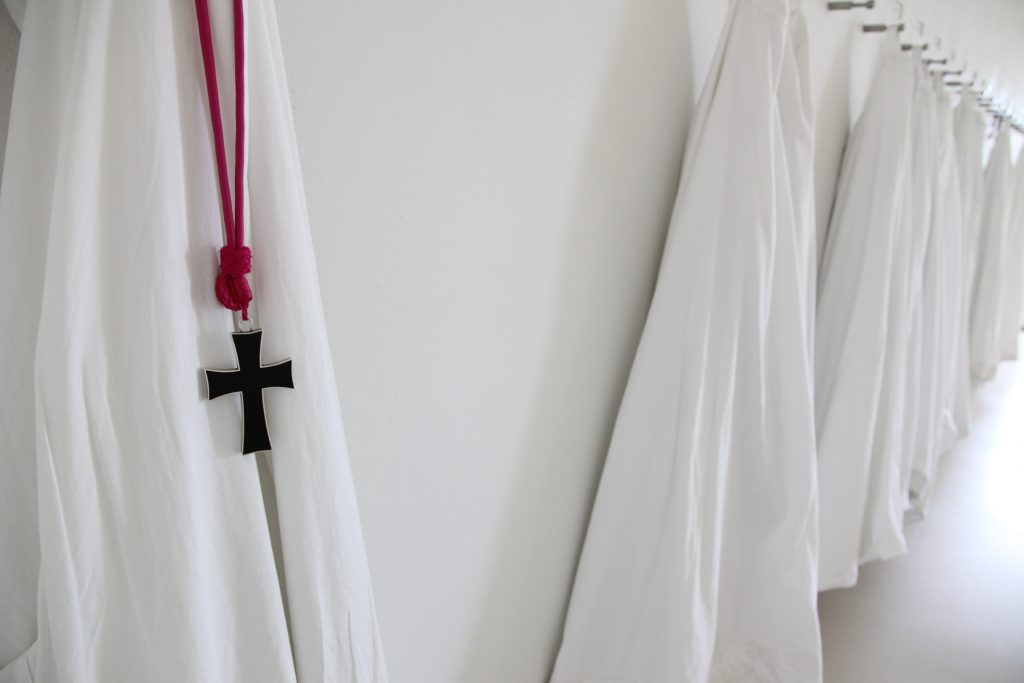The habit

Monks wear a monastic habit, both inside and outside the monastery. With the new name they are given on investiture, the habit reminds them of their words to walk as a new man following Christ, striving to turn their back on the sin of their old selves. It bears witness, both for the monks and those who enter into contact with them, to the fact they are devoted to God.
“You were taught, with regard to your former way of life, to put off your old self, which is being corrupted by its deceitful desires; to be made new in the attitude of your minds; and to put on the new self, created to be like God in true righteousness and holiness”
(Ephesians 4:22-24)
The monastic habit is a cheap garment, like those of the poor, that is worn by all monks in the community. It rejects any notions of elegance or seduction. In addition, monks wear their hair very short. At the time of Saint Benedict, investiture and profession became liturgical rites.
The monastic habit comprises a tunic, scapular and belt, to which a cowl is added for the liturgy for solemnly professed monks and a cope for the temporally professed and novices. Dyed in black by the Benedictines, the habit of the monks in the New Monastery in →Cîteaux, for reasons of simplicity, was made from the linen or woollen fabric available from the markets that did not require dyeing. These days, on top of the white cotton tunic – symbolising the Virgin Mary – novices wear a white scapula and monks, a black scapula. The scapula was originally a simple apron, although it now includes a hood. Traditionally, it is another sign of protection by the Virgin Mary. A belt, made of cotton for novices and leather for monks, completes the habit. Although the knots on the belt intrigue visitors, they have no other function than to adjust the belt to the size of each monk.
Last but not least, the monks wear sandals, just like the people of Israel crossing the Red Sea or the disciples of Jesus in charge of spreading the Good News. The hood protects from the cold in winter and is raised over the head during certain processions. Why do monks’ cowls have such long sleeves? God only knows… probably to stop them from working when it is time to pray and even to stop them from grabbing each other when they are tempted to argue!
““Who are these people wearing white robes?” “These are the people who are coming out of the terrible suffering. They have washed their robes and made them white in the blood of the lamb. That is why they are in front of the throne of God and worship him night and day in his Temple.””
(Revelations 7:13-15)
The brothers wear the cowl or cope to celebrate the Eucharist and Divine Office, as well as during personal prayer or at the chapter, when the community listens to the Rule of Saint Benedict (and previously even in the refectory when eating in silence listening to a reading). When they are working, the brothers wear clothes suited to their work, which are bought in shops.
During times of persecution, for obvious reasons, monks wore the same clothes as everyone else. This is still the case in countries where the lives of monks, nuns and Christians are threatened.